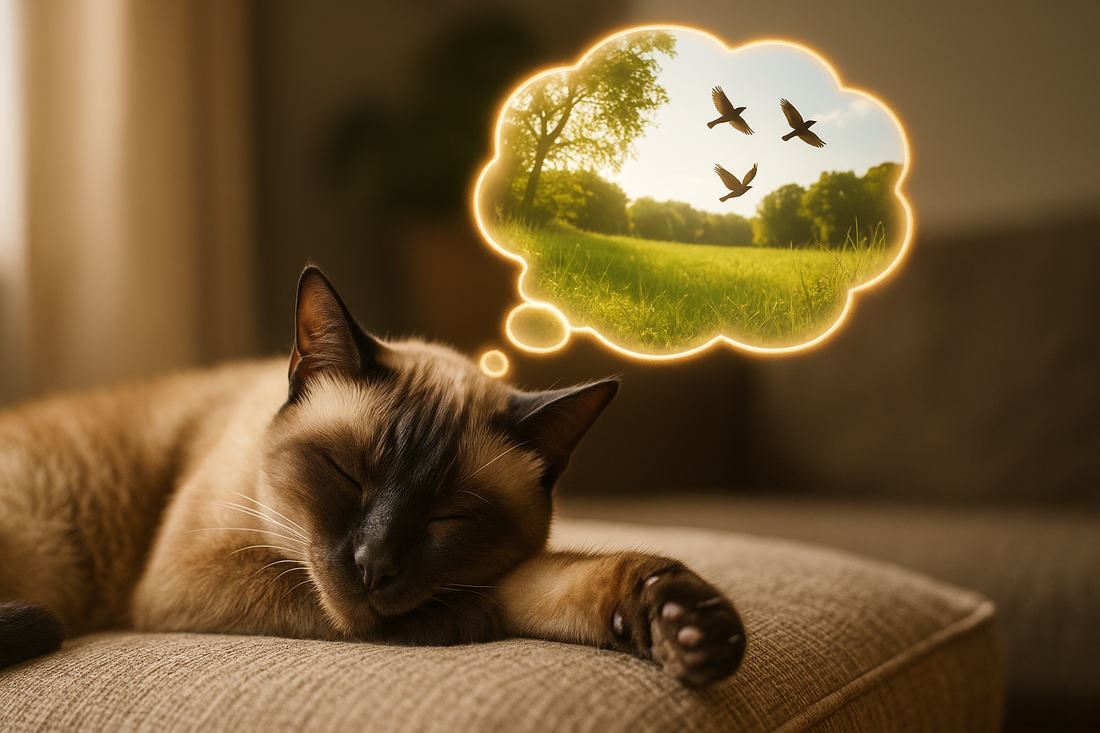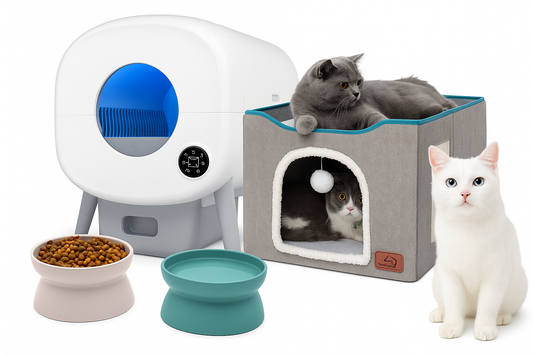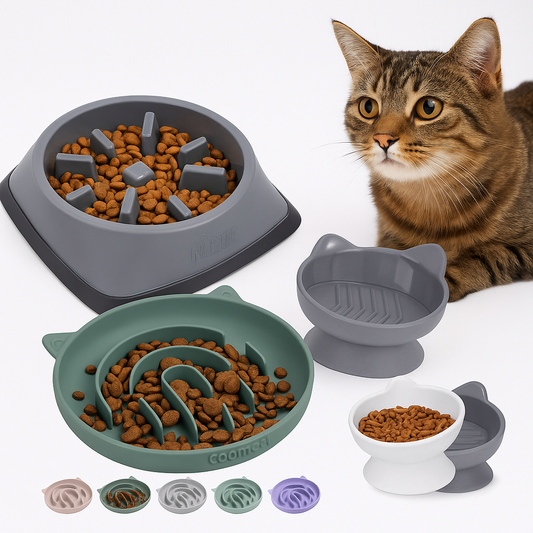
Do Cats Dream? The Surprising Truth About Feline Sleep
Ever caught your cat mid-nap, twitching her paws or letting out a soft meow? It might look cute (or a little weird), but it’s probably a sign she’s dreaming. The idea that cats dream might sound like wishful thinking from doting pet parents, but there’s real science behind it — and the truth is pretty fascinating.
In this deep dive into feline sleep, we’ll explore what the research says about how cats sleep, why they dream, what those dreams might include, and how to tell when your kitty is caught up in a dreamworld. We’ll also answer common questions like whether cats can have nightmares, and how you can help them get the best sleep possible.
Cats Sleep… A Lot. But Why?
If you live with a cat, you’ve probably noticed they’re basically professional nappers. Most cats sleep between 12 to 16 hours a day, and some even snooze up to 20 hours, especially kittens and senior cats. That’s not laziness — it’s instinct.
Cats are natural predators. In the wild, they need short bursts of intense energy to stalk, chase, and catch prey. Sleeping helps them conserve energy between these active periods. Even domestic cats, who hunt kibble instead of mice, retain those wild instincts.
This type of sleeping pattern is called polyphasic sleep — sleeping in short bursts throughout the day and night. It’s different from humans, who typically have one long sleep session per night (monophasic sleep). You might notice your cat asleep during the day, up at 3 a.m. for a zoomie session, and then passed out again by sunrise. Totally normal.
According to Catster, "Unlike humans who follow a monophasic sleep cycle, characterized by a single, long sleep period, cats are polyphasic sleepers. This means they sleep multiple times throughout the 24-hour cycle. On average, a cat will sleep anywhere from 13 to 16 hours a day, distributed through several shorter naps."
Understanding the Feline Sleep Cycle
Just like us, cats experience different stages of sleep, including REM (Rapid Eye Movement) and non-REM sleep. These stages make up the feline sleep cycle, and each one serves a purpose.
- Non-REM sleep is deep and restorative. This is when the body repairs itself and boosts immune function. It’s quieter — no twitching or noises.
- REM sleep is more active. Brain activity increases, and this is when dreaming happens. You might see signs like rapid eye movement, muscle twitches, soft noises, or even little paw movements.
A full cat sleep cycle is much shorter than a human’s — about 20 to 30 minutes — with multiple REM periods throughout. Your cat could dream several times during one nap.
Do Cats Dream?

Short answer: Yes, cats dream. And it’s not just a theory — there’s actual scientific evidence behind it.
In the 1960s, a French neuroscientist named Michel Jouvet conducted studies on cats by disabling the part of the brain that controls muscle paralysis during REM sleep. Without this function, the cats physically acted out their dreams — stalking, pouncing, and moving as if they were hunting prey. This confirmed that their brains were replaying experiences, even though they were asleep.
That suggests cats, like humans, process memories and daily events through dreaming. Your cat might dream about chasing birds, exploring the backyard, or even curling up in your lap. Basically, if it happened while they were awake, it’s fair game for dreamland.
What Happens When Cats Dream?
We can’t know for sure what cats see in their dreams — but we can make educated guesses.
Studies on rats have shown they replay moments from the day during REM sleep. Their brains "rehearse" navigation through mazes they ran while awake. Since cats have similar brain structures (particularly in the hippocampus, which handles memory), scientists believe they do the same.
So what happens when cats dream? Probably things like:
- Chasing a favorite toy (or imaginary prey)
- Reenacting a moment from playtime
- Interactions with their humans
- Exploring a new environment
- Hearing sounds from earlier that day
If your cat had an especially exciting or stressful day, it might show up in her dreams that night.
How to Tell If Your Cat Is Dreaming

Not sure whether your cat is dreaming? Here are a few signs to look for:
- Twitching paws or tail: These small movements often mimic running or pouncing.
- Rapid eye movement: Look closely — you might see their eyes darting under closed lids.
- Whisker flicks: Some cats twitch their whiskers as if sensing something in their dream.
- Quiet noises: Soft meows, chirps, or even purrs can happen during REM sleep.
- Sudden body movements: A head jerk or shoulder shrug might mean they’re reacting to dream activity.
Dreaming typically starts around 20 minutes into a nap, during the REM phase. Not every sleep cycle will include dreaming, but if your cat naps as often as most, they likely dream several times a day.
Do Cats Have Nightmares?
This is one of the most common — and debated — questions about cat sleep.
While there's no way to confirm if cats experience nightmares in the way humans do, it’s certainly possible they have unpleasant dreams. If your cat suddenly jolts awake, looks startled, or immediately seeks comfort, she might have had a bad dream.
You may also notice:
- Dilated pupils
- Frightened or agitated behavior after waking
- Refusal to return to sleep right away
Trauma-experienced cats, like rescues or those who’ve lived in rough environments, might be more prone to these kinds of sleep disruptions. If this behavior is frequent or distressing, a vet checkup could help rule out anxiety or other issues.
Do Kittens Dream Too?
Absolutely. In fact, kittens spend more time in REM sleep than adult cats — as much as 60% of their sleep in the early weeks of life. That means they’re likely dreaming a lot more.
REM sleep plays a big role in neural development, especially in young animals. Dreaming might help kittens form memories, process new experiences, and even develop motor skills. If you see your kitten twitching like crazy mid-nap, don’t worry — it’s probably just her little brain hard at work.
Helping Your Cat Sleep Better (and Dream Happily)
Want to support your cat’s sleep — and maybe even encourage sweeter dreams? Here are some tips:
1. Create a Sleep-Friendly Environment
Give your cat quiet, cozy spots to nap in peace. Cats love high perches, enclosed spaces, and warm areas. Consider a soft bed, a heated pad, or a quiet nook by a window. If you’re looking for tried-and-tested sleep options, check out our roundup of 10 Cat Beds That Are Actually Used by Cats — all real picks loved by real cats.
2. Keep a Consistent Routine
Cats love routine. Feeding, playtime, and sleep should follow a predictable schedule. This helps regulate their internal clock and reduces stress.
3. Burn Energy Before Bed
A quick play session in the evening (with a wand toy or laser pointer) helps your cat burn energy and settle down. It mimics a natural hunt-sleep cycle.
4. Limit Nighttime Disruptions
If your cat gets the zoomies at 3 a.m., try feeding a small meal before bed — cats tend to sleep better with a full belly. Also, consider blackout curtains or white noise to keep their environment calm.
Dreaming and Cat Personality: Does It Vary?
You might wonder if certain types of cats dream more than others. While there’s no solid research to confirm this, some owners report that more playful or social cats tend to show more signs of active dreaming.
Factors that might influence dreaming include:
- Activity level: More stimulation during the day = more material for dreams.
- Age: Kittens and seniors have more REM sleep.
- Stress levels: Cats processing stress may dream more actively.
- Health: Neurological or metabolic issues can affect sleep cycles — so if your cat's dreaming behavior changes drastically, talk to your vet.
Why Understanding Cat Dreams Matters

It’s easy to dismiss pet behavior as just “cute” or quirky, but understanding how and why cats dream gives us more insight into their emotional lives. Dreaming helps with:
- Memory and learning
- Stress relief
- Bonding experiences
- Developmental growth (especially in kittens)
Just like in humans, good sleep leads to better health, behavior, and mood. By giving our cats safe, peaceful spaces to sleep and dream, we’re improving their overall wellbeing.
Final Thoughts: Let Sleeping Cats Dream
So yes, cats do dream — and the science backs it up. When you see your furry friend twitching her paws or softly chirping during a nap, you’re witnessing something incredible: a glimpse into her inner world. Maybe she’s chasing a bird. Maybe she’s dreaming of you.
Next time she curls up and drifts off, let her be. She might just be off on the adventure of her dreams.
Want More Feline Fun Facts?
Check out the rest of our blog at Capnip.co for quirky cat behavior insights, wellness tips, and product picks designed to make every nap (and every dream) a great one.



